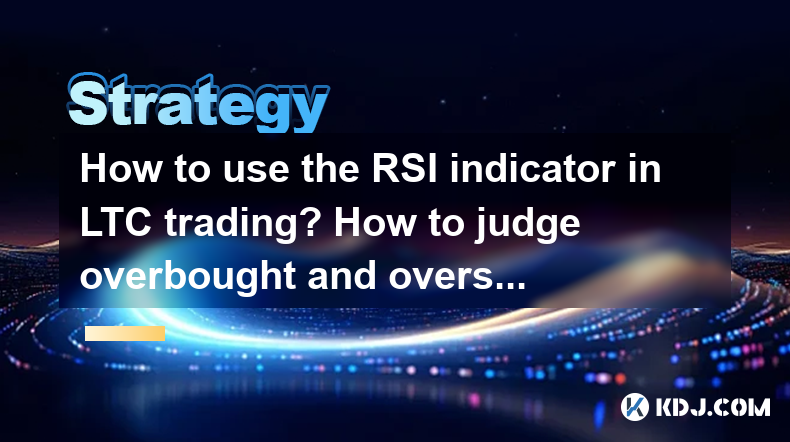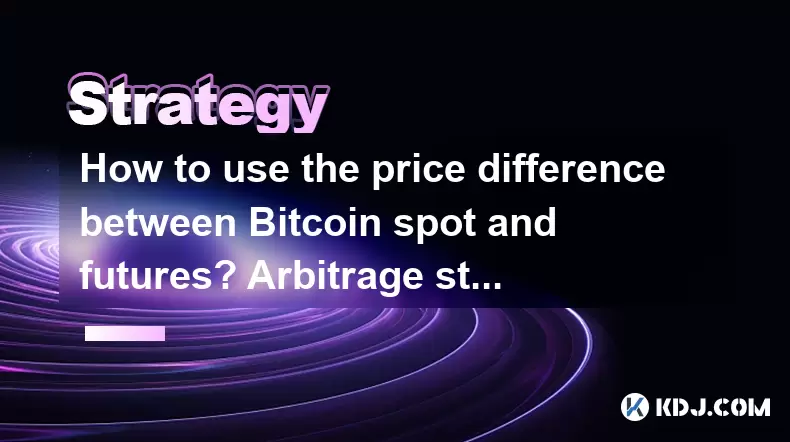-
 Bitcoin
Bitcoin $108,463.3266
-1.47% -
 Ethereum
Ethereum $2,535.8576
-3.62% -
 Tether USDt
Tether USDt $1.0006
0.02% -
 XRP
XRP $2.2352
-2.24% -
 BNB
BNB $658.1049
-0.63% -
 Solana
Solana $149.9207
-2.53% -
 USDC
USDC $0.9998
-0.07% -
 TRON
TRON $0.2857
0.45% -
 Dogecoin
Dogecoin $0.1659
-4.24% -
 Cardano
Cardano $0.5784
-3.85% -
 Hyperliquid
Hyperliquid $38.4944
-4.70% -
 Sui
Sui $2.9107
-4.19% -
 Bitcoin Cash
Bitcoin Cash $485.3637
-3.32% -
 Chainlink
Chainlink $13.3074
-4.18% -
 UNUS SED LEO
UNUS SED LEO $9.0499
0.41% -
 Avalanche
Avalanche $18.0347
-3.98% -
 Stellar
Stellar $0.2394
-2.23% -
 Toncoin
Toncoin $2.8110
-2.68% -
 Shiba Inu
Shiba Inu $0.0...01155
-3.23% -
 Litecoin
Litecoin $87.7967
-3.87% -
 Hedera
Hedera $0.1555
-2.87% -
 Monero
Monero $317.3839
-1.79% -
 Polkadot
Polkadot $3.4144
-4.90% -
 Dai
Dai $1.0000
-0.02% -
 Ethena USDe
Ethena USDe $1.0003
0.00% -
 Bitget Token
Bitget Token $4.4734
-2.29% -
 Uniswap
Uniswap $7.2556
-6.53% -
 Pepe
Pepe $0.0...09693
-7.27% -
 Aave
Aave $267.0924
-4.81% -
 Pi
Pi $0.4834
-3.31%
How to use the RSI indicator in LTC trading? How to judge overbought and oversold?
Using RSI for LTC trading helps identify overbought and oversold conditions, enhancing trading decisions when combined with other indicators.
May 01, 2025 at 07:42 pm

Trading Litecoin (LTC) using technical indicators can be a valuable strategy for traders looking to capitalize on market movements. One of the most popular indicators used in this context is the Relative Strength Index (RSI). The RSI is a momentum oscillator that measures the speed and change of price movements, helping traders identify overbought and oversold conditions. In this article, we will explore how to use the RSI indicator specifically for LTC trading and how to effectively judge overbought and oversold situations.
Understanding the RSI Indicator
The Relative Strength Index (RSI) is a technical indicator developed by J. Welles Wilder Jr. and introduced in his 1978 book, "New Concepts in Technical Trading Systems." The RSI is calculated using the average gain and loss of an asset over a specified period, typically 14 days. The formula for RSI is as follows:
[ \text{RSI} = 100 - \left( \frac{100}{1 + \text{RS}} \right) ]
Where RS (Relative Strength) is the average gain of up periods during the specified time frame divided by the average loss of down periods.
The RSI oscillates between 0 and 100, with readings above 70 typically indicating that an asset is overbought and readings below 30 suggesting that it is oversold. For LTC trading, understanding these levels can help traders make informed decisions about when to buy or sell.
Setting Up the RSI Indicator for LTC Trading
To use the RSI indicator for LTC trading, you will need to set it up on your trading platform. Here are the steps to do so:
- Choose a Trading Platform: Select a reliable cryptocurrency trading platform that supports LTC and offers technical analysis tools, such as Binance, Coinbase Pro, or TradingView.
- Add the RSI Indicator: Navigate to the chart settings or indicators menu and search for the RSI. Add it to your LTC chart.
- Adjust the Period: The default period for RSI is 14 days, but you can adjust it to suit your trading strategy. Some traders use shorter periods for more sensitive readings or longer periods for smoother trends.
- Set Overbought and Oversold Levels: Ensure that the overbought level is set at 70 and the oversold level at 30. These are the standard thresholds, but you can adjust them based on your analysis.
Identifying Overbought Conditions in LTC Trading
An overbought condition occurs when the RSI value exceeds 70, suggesting that the asset may be due for a price correction. In LTC trading, this can be a signal to consider selling or taking profits. Here's how to identify and act on overbought conditions:
- Monitor the RSI Value: Keep an eye on the RSI value on your LTC chart. When it crosses above 70, it indicates an overbought condition.
- Confirm with Price Action: Look for signs of price exhaustion, such as a bearish candlestick pattern or a divergence between the price and the RSI.
- Consider Selling: If the RSI remains above 70 and other indicators confirm the overbought condition, consider selling your LTC or taking profits.
Identifying Oversold Conditions in LTC Trading
An oversold condition occurs when the RSI value falls below 30, suggesting that the asset may be undervalued and due for a price rebound. In LTC trading, this can be a signal to consider buying. Here's how to identify and act on oversold conditions:
- Monitor the RSI Value: Watch the RSI value on your LTC chart. When it drops below 30, it indicates an oversold condition.
- Confirm with Price Action: Look for signs of a potential reversal, such as a bullish candlestick pattern or a divergence between the price and the RSI.
- Consider Buying: If the RSI remains below 30 and other indicators confirm the oversold condition, consider buying LTC or adding to your position.
Using RSI Divergence in LTC Trading
RSI divergence occurs when the price of LTC moves in the opposite direction of the RSI. This can be a powerful signal for potential trend reversals. There are two types of divergence to watch for:
- Bullish Divergence: This occurs when the price of LTC makes a lower low, but the RSI makes a higher low. It suggests that the downward momentum is weakening, and a bullish reversal may be imminent.
- Bearish Divergence: This occurs when the price of LTC makes a higher high, but the RSI makes a lower high. It suggests that the upward momentum is weakening, and a bearish reversal may be imminent.
To use RSI divergence in LTC trading:
- Identify Divergence: Look for instances where the price and RSI are moving in opposite directions.
- Confirm with Other Indicators: Use other technical indicators, such as moving averages or volume, to confirm the divergence signal.
- Act on the Signal: If the divergence is confirmed, consider entering a trade in the direction of the expected reversal.
Combining RSI with Other Indicators for LTC Trading
While the RSI is a powerful tool on its own, combining it with other indicators can enhance your LTC trading strategy. Here are some common combinations:
- RSI and Moving Averages: Use moving averages to identify the overall trend and the RSI to time your entries and exits. For example, buy when the price is above a moving average and the RSI is oversold.
- RSI and MACD: The Moving Average Convergence Divergence (MACD) can help confirm RSI signals. For instance, if the RSI indicates an oversold condition and the MACD shows a bullish crossover, it can be a strong buy signal.
- RSI and Bollinger Bands: Bollinger Bands can help identify volatility and potential price breakouts. If the RSI is oversold and the price touches the lower Bollinger Band, it may be a good time to buy.
Practical Example of Using RSI in LTC Trading
Let's walk through a practical example of using the RSI indicator for LTC trading:
- Scenario: You are monitoring the LTC/USD pair on a daily chart.
- Observation: The RSI value drops to 28, indicating an oversold condition.
- Confirmation: You notice a bullish divergence, with the price making a lower low and the RSI making a higher low.
- Action: You decide to buy LTC, setting a stop-loss below the recent low and a take-profit at a resistance level identified on the chart.
Frequently Asked Questions
Q: Can the RSI be used for short-term LTC trading?
A: Yes, the RSI can be used for short-term LTC trading by adjusting the period to a shorter timeframe, such as 7 or 9 days. This makes the indicator more sensitive to price movements, allowing for quicker signals.
Q: How reliable is the RSI in predicting LTC price movements?
A: The RSI is a reliable tool for identifying overbought and oversold conditions, but it should not be used in isolation. Combining it with other indicators and price action analysis can improve its effectiveness in predicting LTC price movements.
Q: What are the risks of relying solely on the RSI for LTC trading?
A: Relying solely on the RSI for LTC trading can lead to false signals and missed opportunities. The RSI can remain in overbought or oversold territory for extended periods during strong trends, leading to premature entries or exits. It's crucial to use the RSI in conjunction with other analysis tools.
Q: How can I adjust the RSI settings for different market conditions in LTC trading?
A: You can adjust the RSI settings by changing the period and the overbought/oversold levels. In highly volatile markets, you might use a shorter period for quicker signals. In less volatile markets, a longer period can provide smoother readings. Additionally, you can adjust the overbought and oversold levels to 80 and 20, respectively, for more conservative signals.
Disclaimer:info@kdj.com
The information provided is not trading advice. kdj.com does not assume any responsibility for any investments made based on the information provided in this article. Cryptocurrencies are highly volatile and it is highly recommended that you invest with caution after thorough research!
If you believe that the content used on this website infringes your copyright, please contact us immediately (info@kdj.com) and we will delete it promptly.
- Bitcoin's Pattern Break: Are HODLers the Key to the Next Surge?
- 2025-07-04 18:50:12
- Bitcoin Price, Trump's Bill, and the $150K Dream: A NYC Take
- 2025-07-04 19:50:12
- Ethereum, LILPEPE, and the July Bounce: Will Pepe Steal ETH's Thunder?
- 2025-07-04 19:10:12
- Binance Institutional Loans: Unlocking 4x Leverage and Zero Interest for Whales
- 2025-07-04 19:15:12
- Bitcoin Bull Run: Analysts Eye Peak in Late 2025?
- 2025-07-04 19:20:13
- Pepe Indicators, Bullish Forecast: Can the Meme Coin Rally?
- 2025-07-04 19:25:12
Related knowledge

What are the skills of Bitcoin option hedging? Practical case sharing
Jun 24,2025 at 04:01pm
Understanding Bitcoin Option HedgingBitcoin option hedging is a risk management strategy used by traders and investors to protect their positions in the volatile cryptocurrency market. By using options, individuals can limit potential losses while retaining the opportunity for profit. In essence, it allows one to insulate against adverse price movements...

How to use the price difference between Bitcoin spot and futures? Arbitrage strategy
Jun 20,2025 at 02:56pm
Understanding Bitcoin Spot and Futures MarketsTo effectively leverage arbitrage opportunities between Bitcoin spot and futures markets, it's essential to understand the fundamental differences between these two types of markets. The spot market refers to the direct buying and selling of Bitcoin for immediate delivery at the current market price. In cont...

How to increase DeFi lending income? Strategy and risk analysis
Jun 24,2025 at 02:08pm
Understanding DeFi Lending and Its Income PotentialDeFi (Decentralized Finance) lending has emerged as a popular way to earn passive income in the cryptocurrency space. Unlike traditional banking systems, DeFi lending platforms allow users to lend their crypto assets directly to borrowers without intermediaries. The lenders earn interest based on the su...

How to operate cryptocurrency cross-market arbitrage? Practical analysis
Jun 23,2025 at 04:01am
Understanding Cryptocurrency Cross-Market ArbitrageCryptocurrency cross-market arbitrage involves taking advantage of price differences for the same digital asset across different exchanges. The core idea is to buy low on one exchange and sell high on another, capturing the profit from the discrepancy. This strategy relies heavily on real-time market da...

How to make profits from high-frequency cryptocurrency trading? Sharing core skills
Jun 19,2025 at 05:07pm
Understanding High-Frequency Cryptocurrency TradingHigh-frequency trading (HFT) in the cryptocurrency market involves executing a large number of trades at extremely fast speeds, often within milliseconds. This method relies on small price discrepancies across exchanges or within a single exchange’s order book. Traders use complex algorithms and ultra-l...

What are the methods of cryptocurrency quantitative trading? Detailed analysis
Jun 22,2025 at 11:07pm
Understanding the Core of Cryptocurrency Quantitative TradingCryptocurrency quantitative trading refers to the use of mathematical models and algorithms to execute trades in the digital asset market. Unlike traditional discretionary trading, which relies heavily on human judgment, quantitative trading leverages data-driven strategies to identify profita...

What are the skills of Bitcoin option hedging? Practical case sharing
Jun 24,2025 at 04:01pm
Understanding Bitcoin Option HedgingBitcoin option hedging is a risk management strategy used by traders and investors to protect their positions in the volatile cryptocurrency market. By using options, individuals can limit potential losses while retaining the opportunity for profit. In essence, it allows one to insulate against adverse price movements...

How to use the price difference between Bitcoin spot and futures? Arbitrage strategy
Jun 20,2025 at 02:56pm
Understanding Bitcoin Spot and Futures MarketsTo effectively leverage arbitrage opportunities between Bitcoin spot and futures markets, it's essential to understand the fundamental differences between these two types of markets. The spot market refers to the direct buying and selling of Bitcoin for immediate delivery at the current market price. In cont...

How to increase DeFi lending income? Strategy and risk analysis
Jun 24,2025 at 02:08pm
Understanding DeFi Lending and Its Income PotentialDeFi (Decentralized Finance) lending has emerged as a popular way to earn passive income in the cryptocurrency space. Unlike traditional banking systems, DeFi lending platforms allow users to lend their crypto assets directly to borrowers without intermediaries. The lenders earn interest based on the su...

How to operate cryptocurrency cross-market arbitrage? Practical analysis
Jun 23,2025 at 04:01am
Understanding Cryptocurrency Cross-Market ArbitrageCryptocurrency cross-market arbitrage involves taking advantage of price differences for the same digital asset across different exchanges. The core idea is to buy low on one exchange and sell high on another, capturing the profit from the discrepancy. This strategy relies heavily on real-time market da...

How to make profits from high-frequency cryptocurrency trading? Sharing core skills
Jun 19,2025 at 05:07pm
Understanding High-Frequency Cryptocurrency TradingHigh-frequency trading (HFT) in the cryptocurrency market involves executing a large number of trades at extremely fast speeds, often within milliseconds. This method relies on small price discrepancies across exchanges or within a single exchange’s order book. Traders use complex algorithms and ultra-l...

What are the methods of cryptocurrency quantitative trading? Detailed analysis
Jun 22,2025 at 11:07pm
Understanding the Core of Cryptocurrency Quantitative TradingCryptocurrency quantitative trading refers to the use of mathematical models and algorithms to execute trades in the digital asset market. Unlike traditional discretionary trading, which relies heavily on human judgment, quantitative trading leverages data-driven strategies to identify profita...
See all articles

























































































